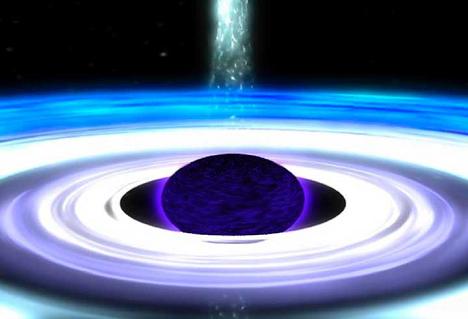These mysterious objects are stars made of dark energy, claims a physicist from Lawrence Livermore Laboratories * If the news had not appeared in Nature and the date on it was not March 31, I would have considered it a hoax or a piece of anti-science

Black holes are mostly the stuff of science fiction, but many scientists to this day believe they have been able to observe them indirectly. However, a physicist from the Lawrence Livermore National Laboratories in California claims that the huge gaps in the fabric of time-space do not exist and cannot exist.
Over the past few years, observations of the motion of galaxies have shown that over 70 percent of the universe appears to be composed of "dark energy" that drives the accelerated expansion of the universe.
George Chaplin believes that the collapse of massive stars, which scientists say causes black holes, simply leads to the creation of stars containing dark energy. "Blacks almost certainly do not exist". claim
Black holes are the best-known product of Einstein's prediction of general relativity, which explains gravity as a curvature in space-time caused by massive objects. The theory suggests that especially massive stars, when they die, will collapse under their own gravity into a single point.
But Einstein didn't believe in black guys, Chaplin claims. "Unfortunately, he couldn't make it clear to himself why." At the root of the problem is the second quantum theory of the twentieth century in physics, which Einstein also helped formulate: quantum mechanics.
In general relativity, there is no meaning to the "world time" that causes clocks to tick at the same rate everywhere. Instead, gravity causes clocks to move at different rates in different places. However, quantum mechanics, which describes physical phenomena on a tiny scale, is meaningful if time in the universe is uniform. If not, the equations don't make sense.
"These problems are particularly pressing at the boundary, or event horizon, of the black hole. To a distant observer, time seems to stand still there. A spacecraft falling into a black hole will appear, to those watching from afar, as if it is stuck forever on the event horizon, even though the astronauts in the spacecraft feel that they are continuing to fall. "General relativity predicts that nothing will happen on the event horizon," says Chaplin.
Quantum transitions
However, as early as 1975, quantum physicists claimed that strange things will indeed happen on the event horizon: matter governed by quantum laws becomes particularly sensitive to small disturbances. "Their results were soon forgotten," says Chaplin, "because they did not match the prediction of general relativity, but in fact they were absolutely correct." The strange behavior, he said, is the hallmark of a "quantum phase transition" of space-time. Chaplin claims that a star does not simply collapse and form a black hole. Instead, the space-time within it is filled with dark energy that has intriguing gravitational effects.
Outside the surface of the dark energy star it behaves like a black hole and produces a tag of strong attraction. However, inside the "negative" attraction of the dark energy must cause the matter to jump back out.
"If the dark-energy star is big enough, Chaplin predicted, every electron that escapes will become a positron, then vaporize with another electron in a high-energy burst. Chaplin says this may explain the observed radiation at the center of our galaxy, which was previously interpreted as the signature of a supermassive black hole. He also believes that the universe may be full of primordial dark energy stars. These were not created by collapsing stars but due to fluctuations in the fabric of space-time itself. Like bubbles of liquid that form spontaneously from a cooling gas. These may be filled with materials that have the same gravitational effect as normal matter but cannot be seen: the elusive entity we call "dark matter".
For information in Nature
For the article in =ARCIVX
Black holes in astrology
The black hole at the center of the galaxy
Quasars and active galactic nuclei
Yadan Astrophysics 5 - Black holes
https://www.hayadan.org.il/BuildaGate4/general2/data_card.php?Cat=~~~124238279~~~202&SiteName=hayadan

One response
Black holes are regions of space where there are no magnetic fields.
http://itshakgonigmanenglish.blogspot.co.il/